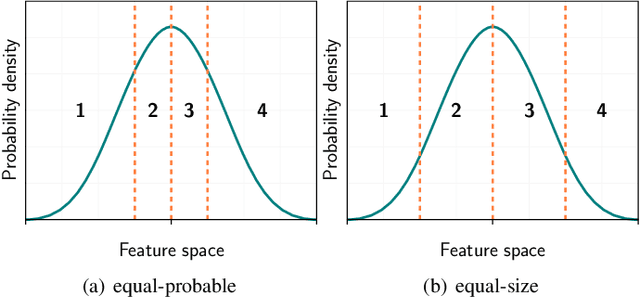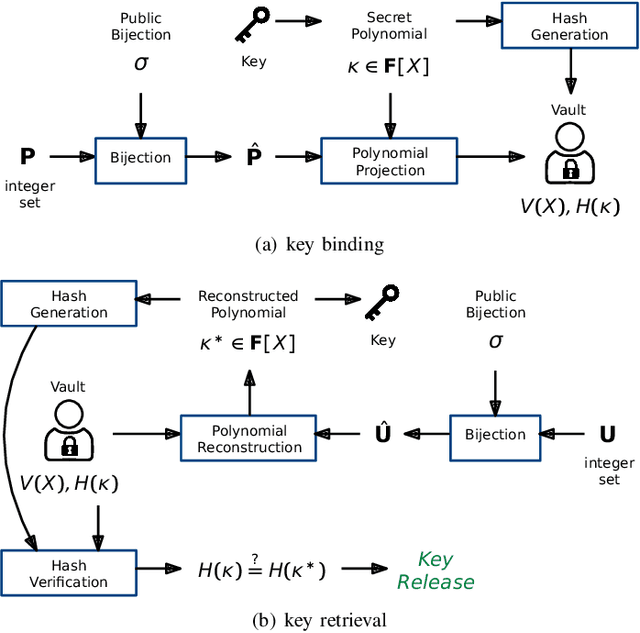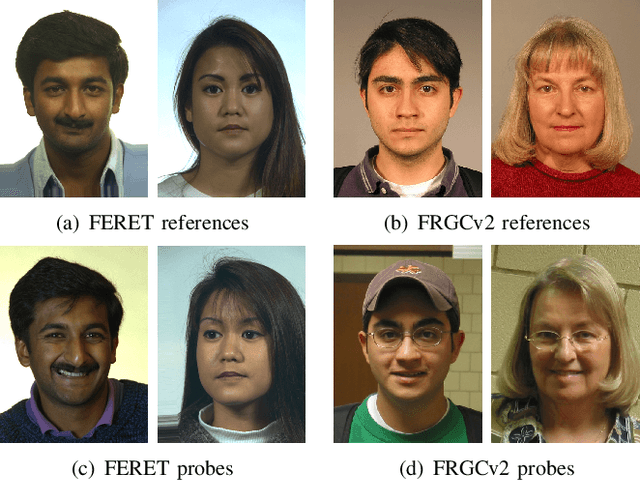Johannes Merkle
secunet Security Networks AG
Deep Learning-based Compression Detection for explainable Face Image Quality Assessment
Jan 07, 2025



Abstract:The assessment of face image quality is crucial to ensure reliable face recognition. In order to provide data subjects and operators with explainable and actionable feedback regarding captured face images, relevant quality components have to be measured. Quality components that are known to negatively impact the utility of face images include JPEG and JPEG 2000 compression artefacts, among others. Compression can result in a loss of important image details which may impair the recognition performance. In this work, deep neural networks are trained to detect the compression artefacts in a face images. For this purpose, artefact-free facial images are compressed with the JPEG and JPEG 2000 compression algorithms. Subsequently, the PSNR and SSIM metrics are employed to obtain training labels based on which neural networks are trained using a single network to detect JPEG and JPEG 2000 artefacts, respectively. The evaluation of the proposed method shows promising results: in terms of detection accuracy, error rates of 2-3% are obtained for utilizing PSNR labels during training. In addition, we show that error rates of different open-source and commercial face recognition systems can be significantly reduced by discarding face images exhibiting severe compression artefacts. To minimize resource consumption, EfficientNetV2 serves as basis for the presented algorithm, which is available as part of the OFIQ software.
Multi-Biometric Fuzzy Vault based on Face and Fingerprints
Jan 17, 2023Abstract:The fuzzy vault scheme has been established as cryptographic primitive suitable for privacy-preserving biometric authentication. To improve accuracy and privacy protection, biometric information of multiple characteristics can be fused at feature level prior to locking it in a fuzzy vault. We construct a multi-biometric fuzzy vault based on face and multiple fingerprints. On a multi-biometric database constructed from the FRGCv2 face and the MCYT-100 fingerprint databases, a perfect recognition accuracy is achieved at a false accept security above 30 bits. Further, we provide a formalisation of feature-level fusion in multi-biometric fuzzy vaults, on the basis of which relevant security issues are elaborated. Said security issues, for which we define countermeasures, are commonly ignored and may impair the overall system's security.
State of the Art of Quality Assessment of Facial Images
Nov 15, 2022



Abstract:The goal of the project "Facial Metrics for EES" is to develop, implement and publish an open source algorithm for the quality assessment of facial images (OFIQ) for face recognition, in particular for border control scenarios.1 In order to stimulate the harmonization of the requirements and practices applied for QA for facial images, the insights gained and algorithms developed in the project will be contributed to the current (2022) revision of the ISO/IEC 29794-5 standard. Furthermore, the implemented quality metrics and algorithms will consider the recommendations and requirements from other relevant standards, in particular ISO/IEC 19794-5:2011, ISO/IEC 29794-5:2010, ISO/IEC 39794-5:2019 and Version 5.2 of the BSI Technical Guideline TR-03121 Part 3 Volume 1. In order to establish an informed basis for the selection of quality metrics and the development of corresponding quality assessment algorithms, the state of the art of methods and algorithms (defining a metric), implementations and datasets for quality assessment for facial images is surveyed. For all relevant quality aspects, this document summarizes the requirements of the aforementioned standards, known results on their impact on face recognition performance, publicly available datasets, proposed methods and algorithms and open source software implementations.
Deep Face Fuzzy Vault: Implementation and Performance
Feb 04, 2021



Abstract:Deep convolutional neural networks have achieved remarkable improvements in facial recognition performance. Similar kinds of developments, e.g. deconvolutional neural networks, have shown impressive results for reconstructing face images from their corresponding embeddings in the latent space. This poses a severe security risk which necessitates the protection of stored deep face embeddings in order to prevent from misuse, e.g. identity fraud. In this work, an unlinkable improved deep face fuzzy vault-based template protection scheme is presented. To this end, a feature transformation method is introduced which maps fixed-length real-valued deep face embeddings to integer-valued feature sets. As part of said feature transformation, a detailed analysis of different feature quantisation and binarisation techniques is conducted using features extracted with a state-of-the-art deep convolutional neural network trained with the additive angular margin loss (ArcFace). At key binding, obtained feature sets are locked in an unlinkable improved fuzzy vault. For key retrieval, the efficiency of different polynomial reconstruction techniques is investigated. The proposed feature transformation method and template protection scheme are agnostic of the biometric characteristic and, thus, can be applied to virtually any biometric features computed by a deep neural network. For the best configuration, a false non-match rate below 1% at a false match rate of 0.01%, is achieved in cross-database experiments on the FERET and FRGCv2 face databases. On average, a security level of up to approximately 28 bits is obtained. This work presents the first effective face-based fuzzy vault scheme providing privacy protection of facial reference data as well as digital key derivation from face.
 Add to Chrome
Add to Chrome Add to Firefox
Add to Firefox Add to Edge
Add to Edge